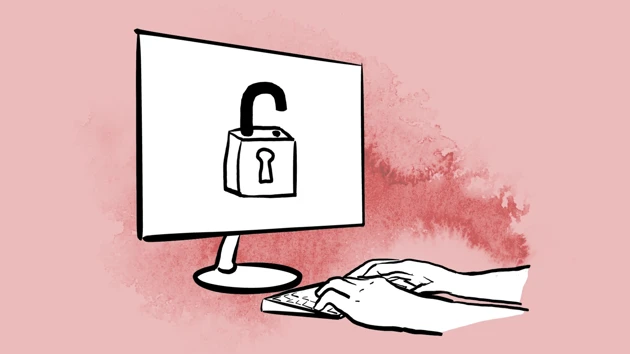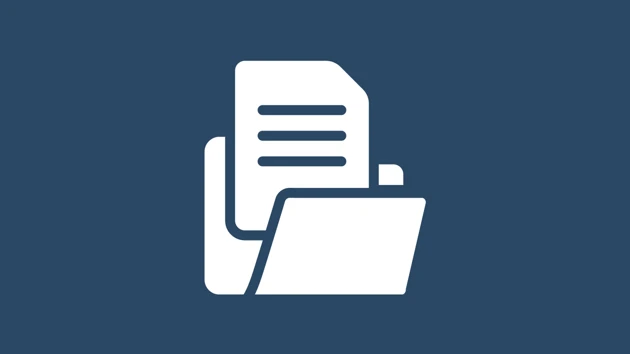You need to document your data management
Before starting a research project, you will need to set up a number of documents that describe how data will be managed during your research. In the documentation process, determine what protection research data need and how you will better enable data reuse, both for yourself and for others.
Benefits of documenting your data management
Documenting your research data management gives you tools to
- choose IT systems, services and working methods for secure management of research data (choice of protection measures and planning of necessary procedures);
- make it easier for you to choose the right amount of data from the start and thus reduce the risks of managing excessively large datasets;
- create a structure for managing research data that facilitates your work throughout the entire lifecycle;
- receive help faster from support services; and
- organise research data to ensure searchability and reusability during and after the project.
Documented data management can enable compliance with regulations governing research, research ethics requirements and good research practice, while allowing you to focus more on the core questions of your research. By following the rules on how information may be managed, you protect the privacy of both the information and the research subjects.
This is included in your documentation
Documentation of your research data management always includes:
In some cases, other documentation may also be needed depending on the type of research data being processed and how they are managed. The most common documents that may be needed are
- notification of personal data processing;
- impact assessment of personal data processing; and
- retainment plan for internal IT systems or cloud services.
How the documents relate to each other
The different documents in the process have different purposes and identify different aspects of research data management. You describe different aspects of your data and draw conclusions to learn about research data in your research project and how you should manage the information in different situations.
Information classification – the foundation for other documentation
The first documentation you create for a project is an information classification. The information classification of your research project identifies the type of data you manage.
Risk and vulnerability analysis – how the project will manage risks
After identifying your information and completing your information classification, you conduct a risk and vulnerability analysis. In this analysis, you describe the threats that may be linked to how the project’s information will be processed and how the project will manage these risks.
Risk and vulnerability analysis
Data management plan – how you will manage data during the research process
A Data Management Plan (DMP) describes how you will work with information during the research process. The DMP creates a workflow for data management in your research work. If your research involves multiple participants, the DMP is also a practical way to communicate workflow, role assignment, data ownership, and synchronised data processing.
Personal data processing – report processing and conduct an impact assessment
If your research will involve processing personal data, you must report this to Umeå University’s record of processing.
If the personal data processing poses a high risk to individuals, you must conduct an impact assessment in consultation with the University’s data protection officer before you begin.
Visit the pages on processing personal data in research for more information
Retainment plan – if you are setting up your own IT system
If your research project is using an IT system or a cloud service not already provided by the University, you need to draw up a retainment plan when first setting this system or service up. The retainment plan describes how information in the system will be preserved or discarded from an archival perspective, to avoid information being lost or destroyed.
If you only use IT systems or IT services provided by the University, you do not need to draw up a retainment plan.
Reuse information between the different documents
Even if the purpose is different, the same or similar information may be requested in your different documents. It is a good idea to reuse the information from one document in other documents requesting the same information, both to simplify your work and to avoid conflicting information.
Update your documentation as necessary
Documentation of research data management begins before collection to ensure that collection is done securely and in compliance with legal and funding body requirements.
How research data are managed can be adjusted to varying degrees during the course of the research project. This means that your documentation needs to be reviewed and, if necessary, updated regularly throughout the project. If changes do not deviate too greatly from the initial assessments, the documentation does not need to be updated, but it can serve as support for assessing how to manage information.
Other documentation related to research data
During and after the research process, you might create multiple types of documentation. When this occurs, you can benefit from reusing information from your previously created documentation. Read more about this on these pages.

Research ethics and good research practice
Conduct research scientifically and in a respectful and ethical manner.

Collaborate with others
Expand your network, but consider what data to share and how you share it.

Secrecy for research data
Research data can be classified as secret, giving you a duty of secrecy.

Archiving and retaining data
Research data are public documents requiring archival at Umeå University.
Do you have questions about research data?
The University has a cross-functional support team for research data management, which includes areas such as archiving, legal affairs, IT support, open data, and information security. You can contact the research data support team through the following form:


